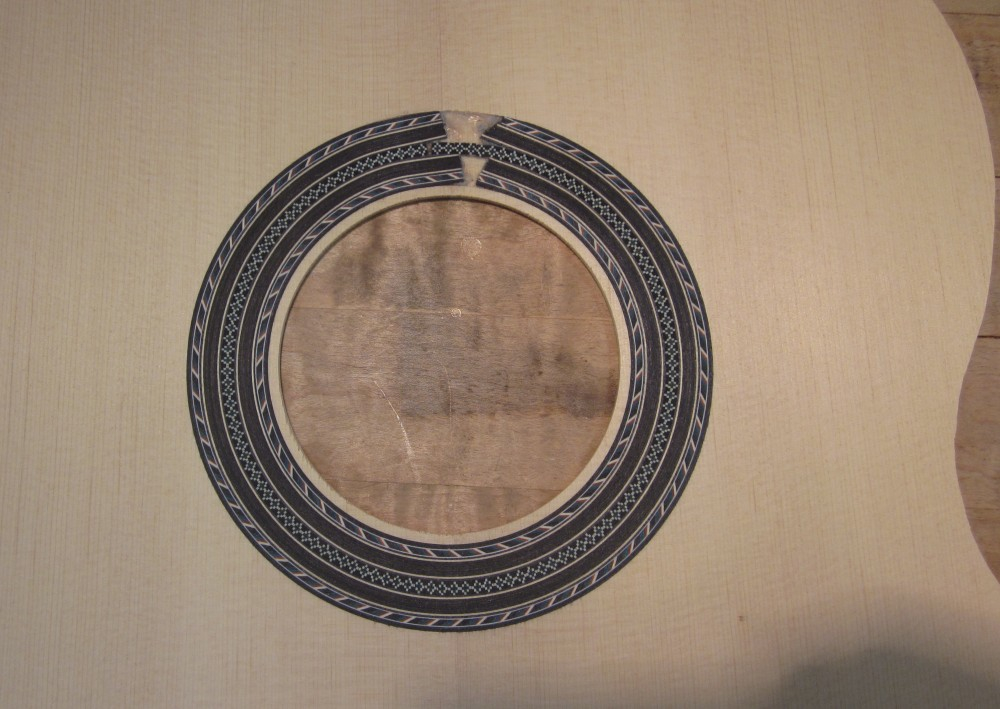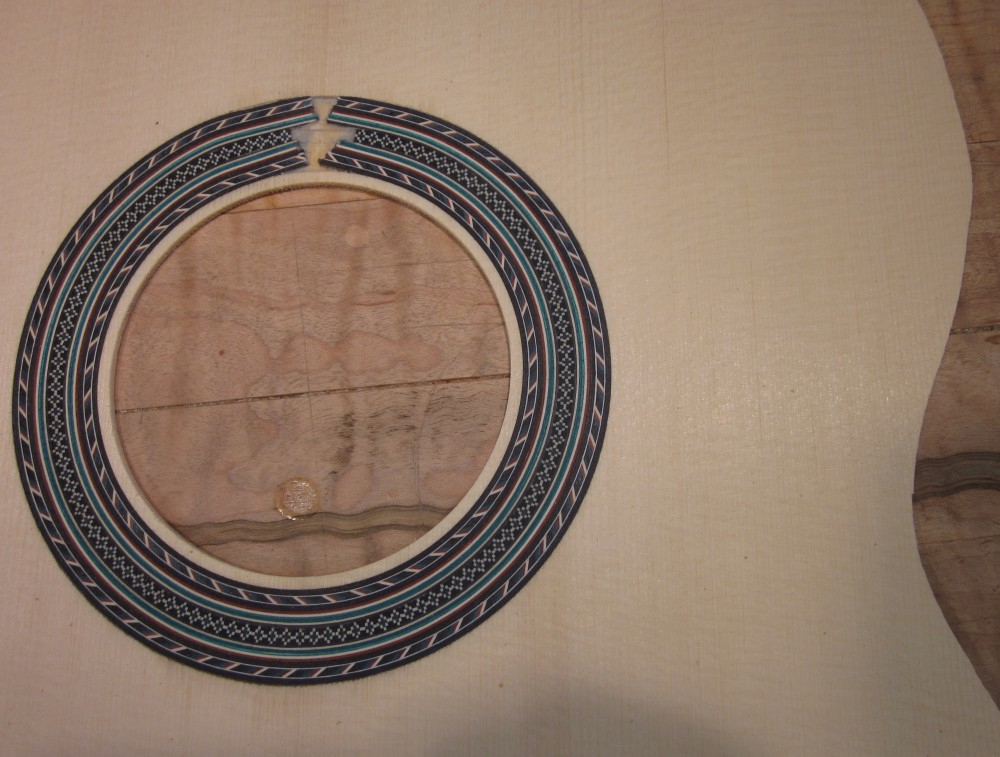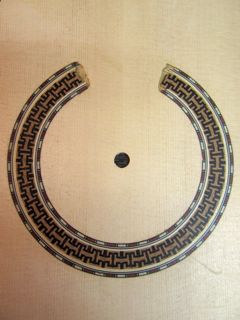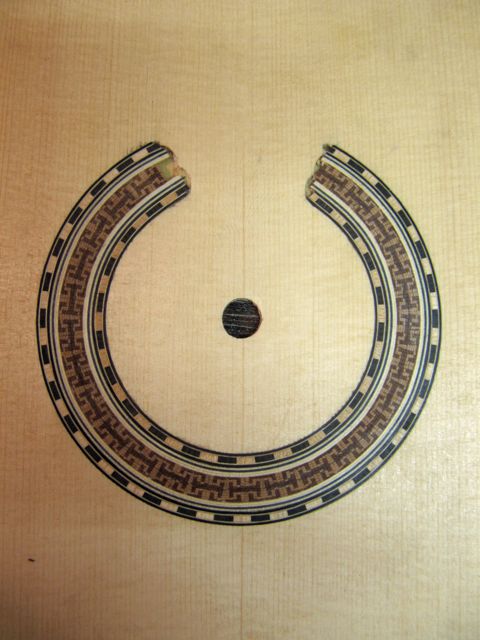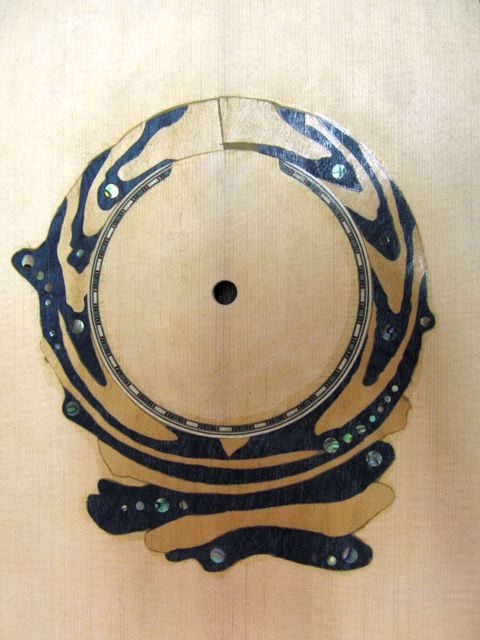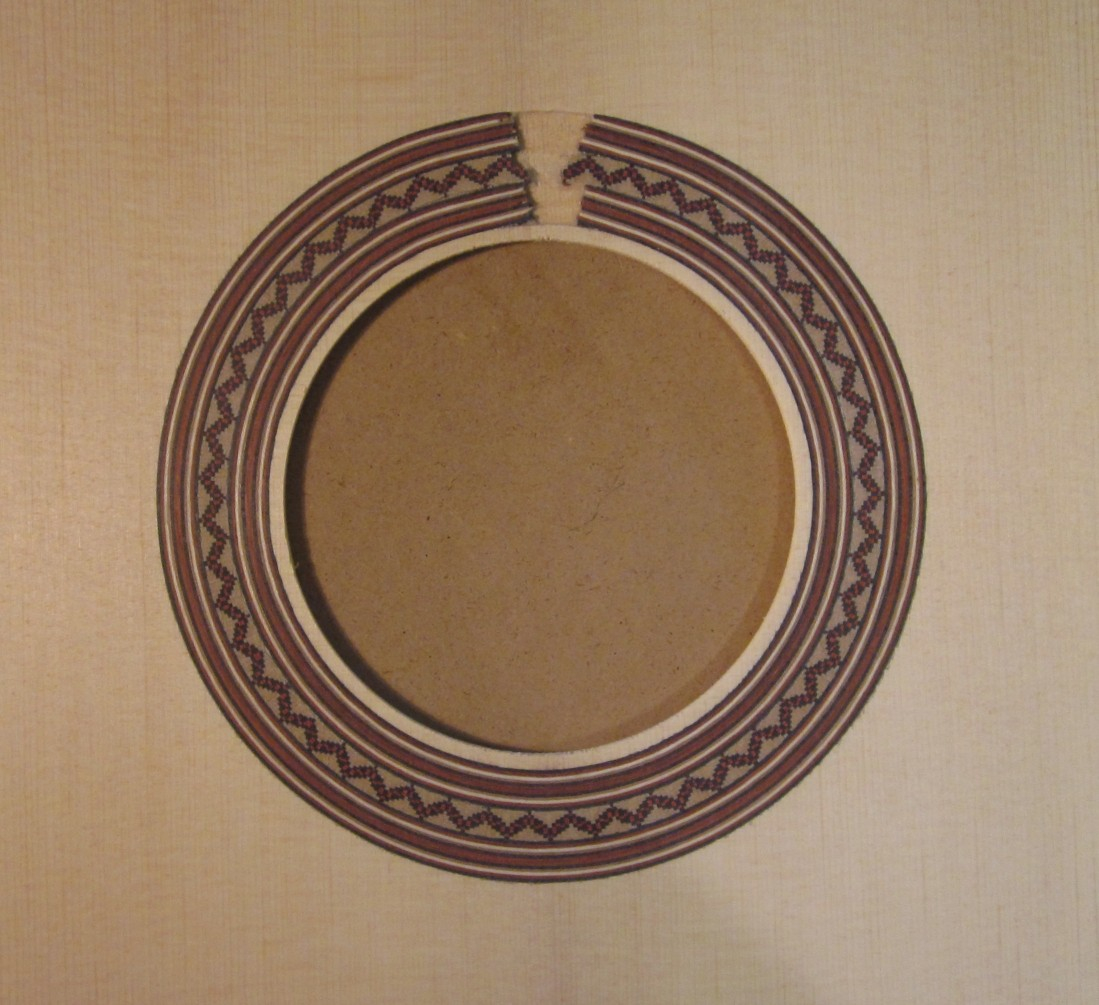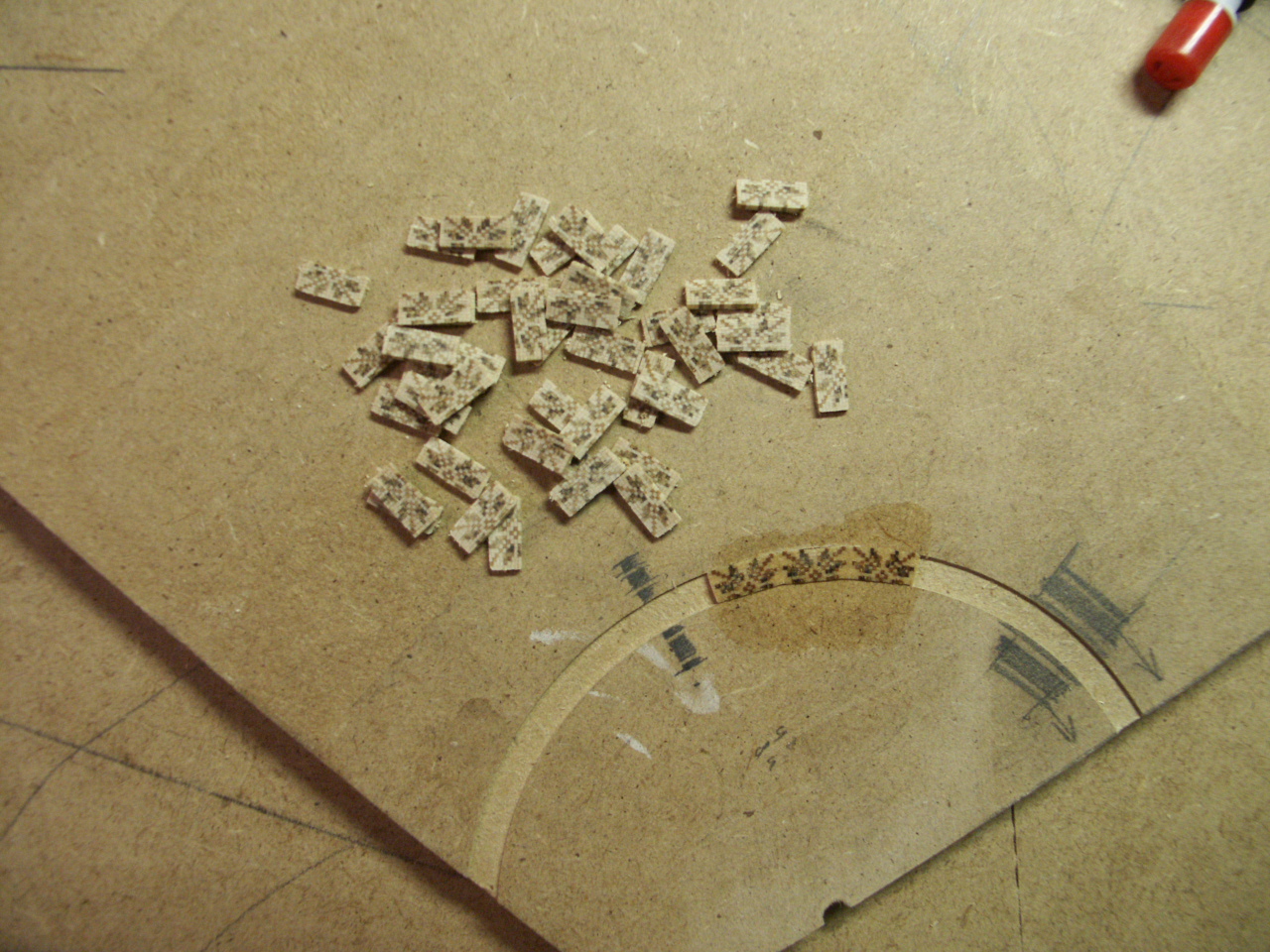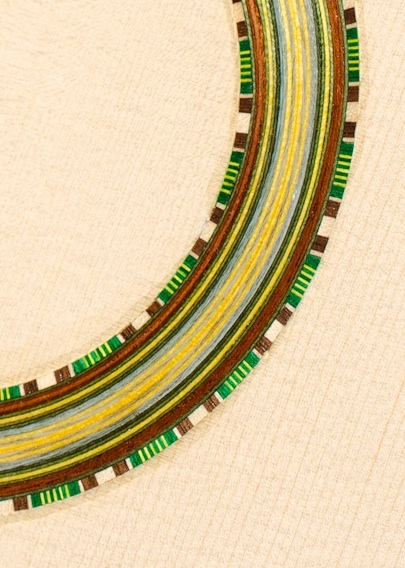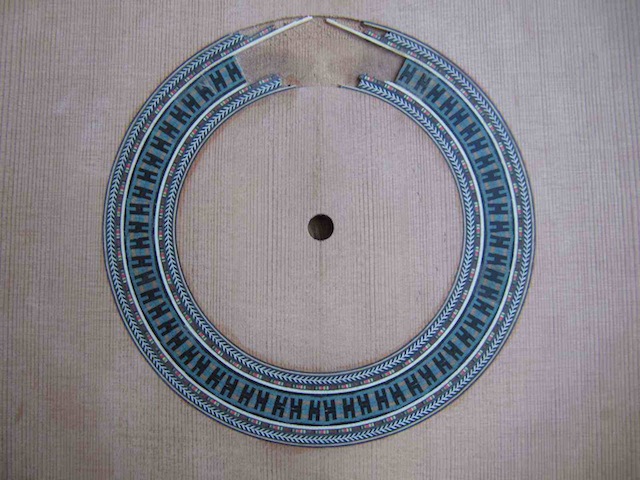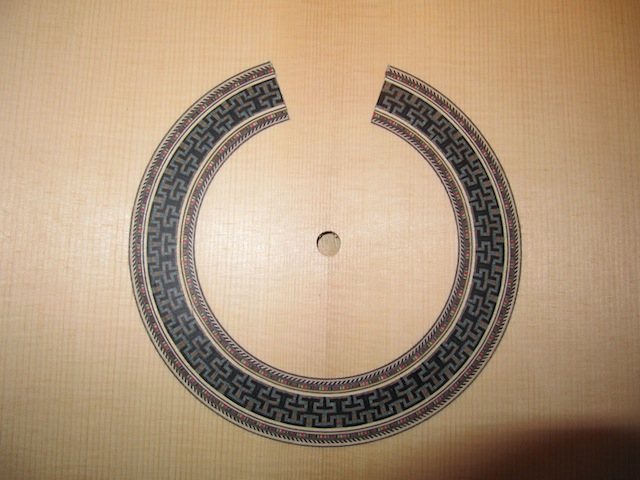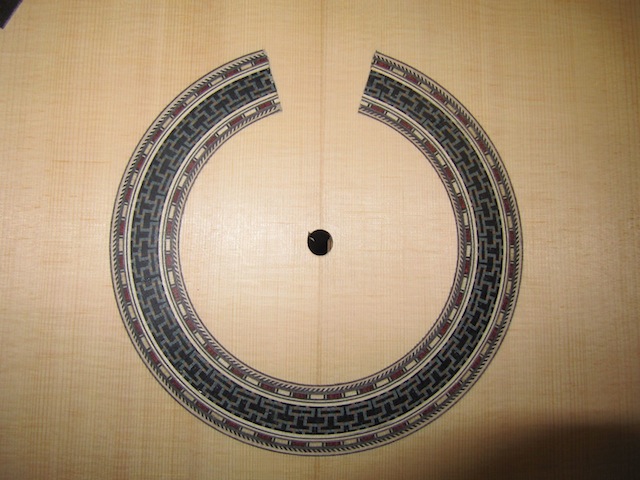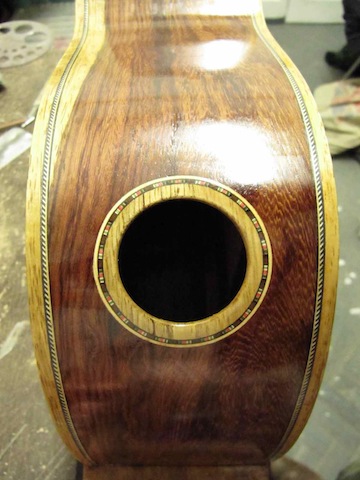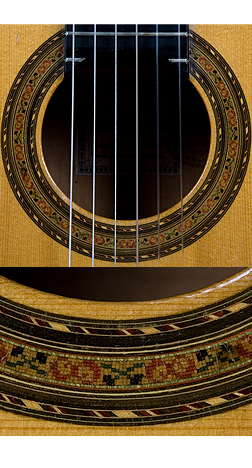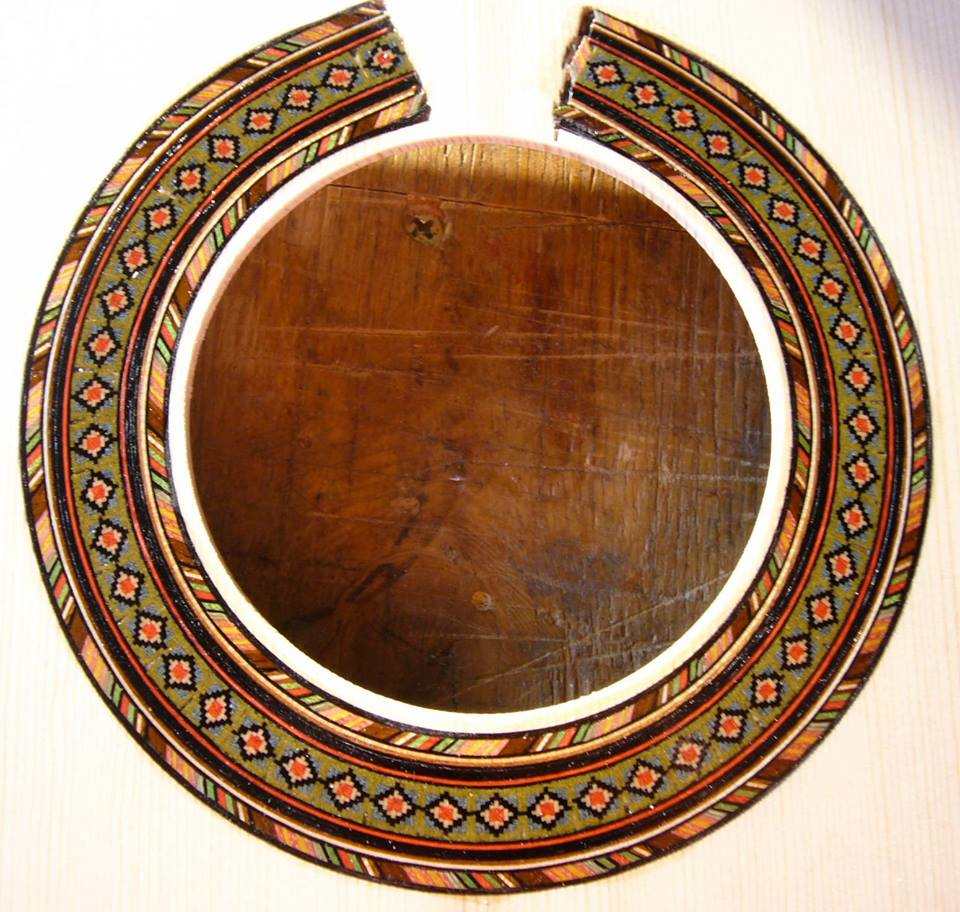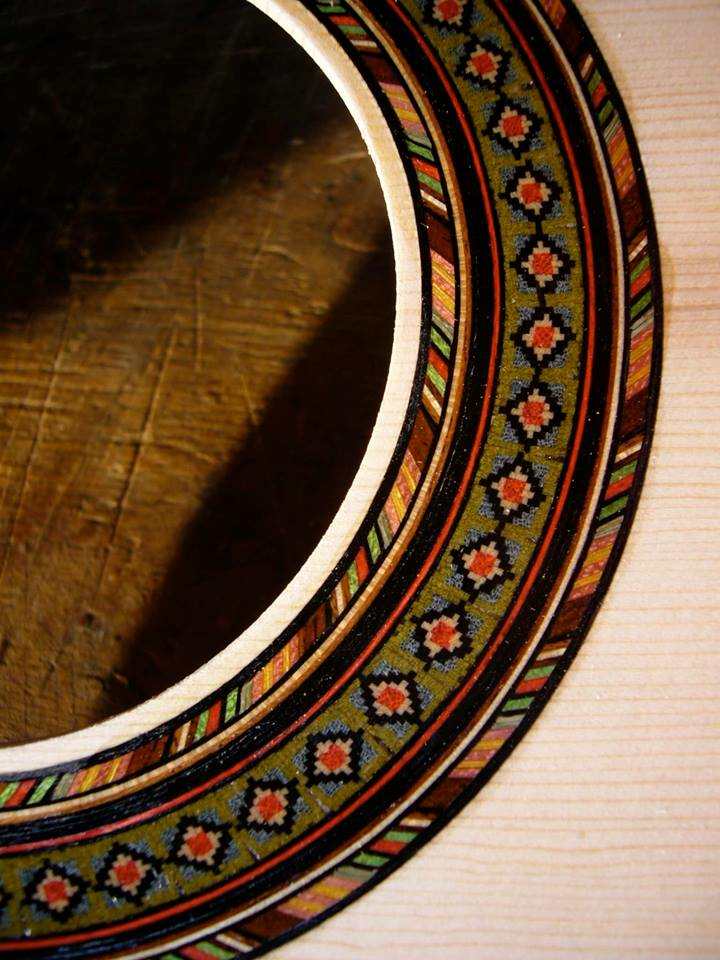|
estebanana -> RE: About rosettes (Oct. 27 2014 0:59:07)
|
quote:
Thanks for posting Stephen, a small central mosiac bordered red in a black field always works for me. Would that be referred to as Esteso style?
I know nothing of guitar building, but admire and enjoy the luthiers work including the decoration; I would be interested in the luthiers thoughts on the following:
I read somewhere that much of guitar decoration has a functional origin.
E.g. The inlaid rosette serves the purpose of reinforcement around the soundhole opening.
The purfling allows for easier joint separation, if the guitar ever needed a major repair requiring deconstruction.
I have thought about rosette many times; I think by the time you add the reinforcement behind the rosette and glue a bar above a below it you have fixed the weakness John mentioned. But you have also created a two and three layered laminate area that almost always stops cracks from extending beyond the soundhole into the rest of the top. Imagine an spruce top with an 86mm wide hole and how a rip could start at that hole the break the top on that tear line. The laminate of the rose and all the backing patches keep that ripping from happening. Sometimes you see guitars with small cracks near the bridge side of the soundhole, with no horizontal bar, rosette lamination or backing under the rosette, what sold stop that from ripping until it hits the bridge?
In steel string repair work the binding is often the entry point for removal of a back, which is common restoration procedure for a guitar valuable enough to warrant that technique if needed to access the inside. Most people try to keep the back and top on, but in some cases it has to come off to do the correct restoration. My friend Stewart Port does high end restoration work on old steel strings, he almost always has a job going where he's removed the binding to do some kind of work. He can also get the same binding back on the guitar later then the top of back goes on. He's kind of a wizard. For Prewar Martin-Gibson guitars and mandolins to retain value collectors a dealers demand this ind of preservation in the restoration work. Most classical and flamenco makers don't have the same demands on them, but there are a few who do know how to take a binding off when they have to. But binding is there to protect the corners and seal the end grain, and John put it, they serve as bumpers. But secondary purpose would be to give access to taking the back off.
There area few things in Spanish building that enable makers to do easier repair work, some makers for example don't glue the ribs into the heel slot. There was probably a time when replacing a shattered rib meant cutting the broken rib out taking off half the binding and installing a new rib. Maybe there are some old guitars out there with mismatched ribs? Who knows?
One think is for certain, guitars, unlike violins were not engineered to come apart easy for repair work on the insides.
|
|
|
|
